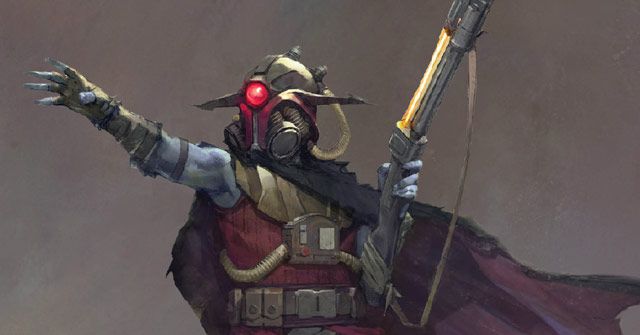
The secretive Star Wars project is out there and shaking up the galaxy
Star Wars is famous for its “Expanded Universe,” a suite of multimedia that exists to serve the franchise’s blockbuster movies. But in the post-Skywalker Saga era, it means something decidedly more. Between Disney Plus series, comics, video games, and publishing efforts pushing with equal force on canon, Star Wars is the Expanded Universe.
And the release of Charles Soule’s new novel Light of the Jedi kicks off the mega-property’s most advantageous experiment: The establishment of The High Republic, a prequel-to-the-prequel era that allows a new batch of Star Wars writers to do whatever the heck they want, with no chance of impacting Luke Skywalker’s journey.
The Light of the Jedi, along with The High Republic launch books A Test of Courage and Marvel’s The High Republic comic, not only drop readers into a temporal variant of Star Wars, but what feels like an entirely new civilization. This is the Galactic Republic as a spacefaring Roman Empire — unified, idealistic, and expanding its reaches to the furthest points of space. (Maybe too far. Certainly with too much confidence.) While none of the titles match the literary density and description of George R.R. Martin’s A Song of Ice and Fire tomes, they wield the same instinct for history. There’s a sense that thousands of years of cultural and political history have preceded the action of the current moment.
Soule’s Light of the Jedi does very little expositional work to make sense of its setting; instead, the book opens on a ticking clock and in a portion of this world that very well might be destroyed. As Jedi and Republic officers jump into first responder mode and then hunt down the perpetrators of the “Great Disaster” in pulpy, potboiler fashion, The High Republic takes a giant leap away from the familiar. At times, it’s like Star Wars doing Star Trek, though Light of the Jedi still delivers a Death Star-level blast of Star Wars mythos. Every page of the first fourth of the book is packed with names, places, ships, and techno-jargon to fill out Wookieepedia, and Soule’s writing often emulates the films fans know on a molecular level. And, really, it must — though the elements of what makes Star Wars Star Wars are ambiguous and personal, expanding the story has often lead creators into a minefield of expectation.
Over a Zoom call in late December, Soule seems aware of the pressure. He’s been on the press tour for The High Republic for nearly a year, thanks to the COVID-19 pandemic complicating the rollout, and careful when talking about Light of the Jedi’s impact on the mythology. But the book’s bold choices and expansion of the galaxy add up to real thrills, since there’s no telling what might happen next. It’s a completely foreign feeling when it comes to Star Wars.
Below, we talked to Soule about the direction of the book, the thus-far mysterious villains known as the Nihil, and how the novel sets into motion the future of The High Republic.
[Ed. note: This interview was edited and condensed for clarity. It contains spoilers for Light of the Jedi.]
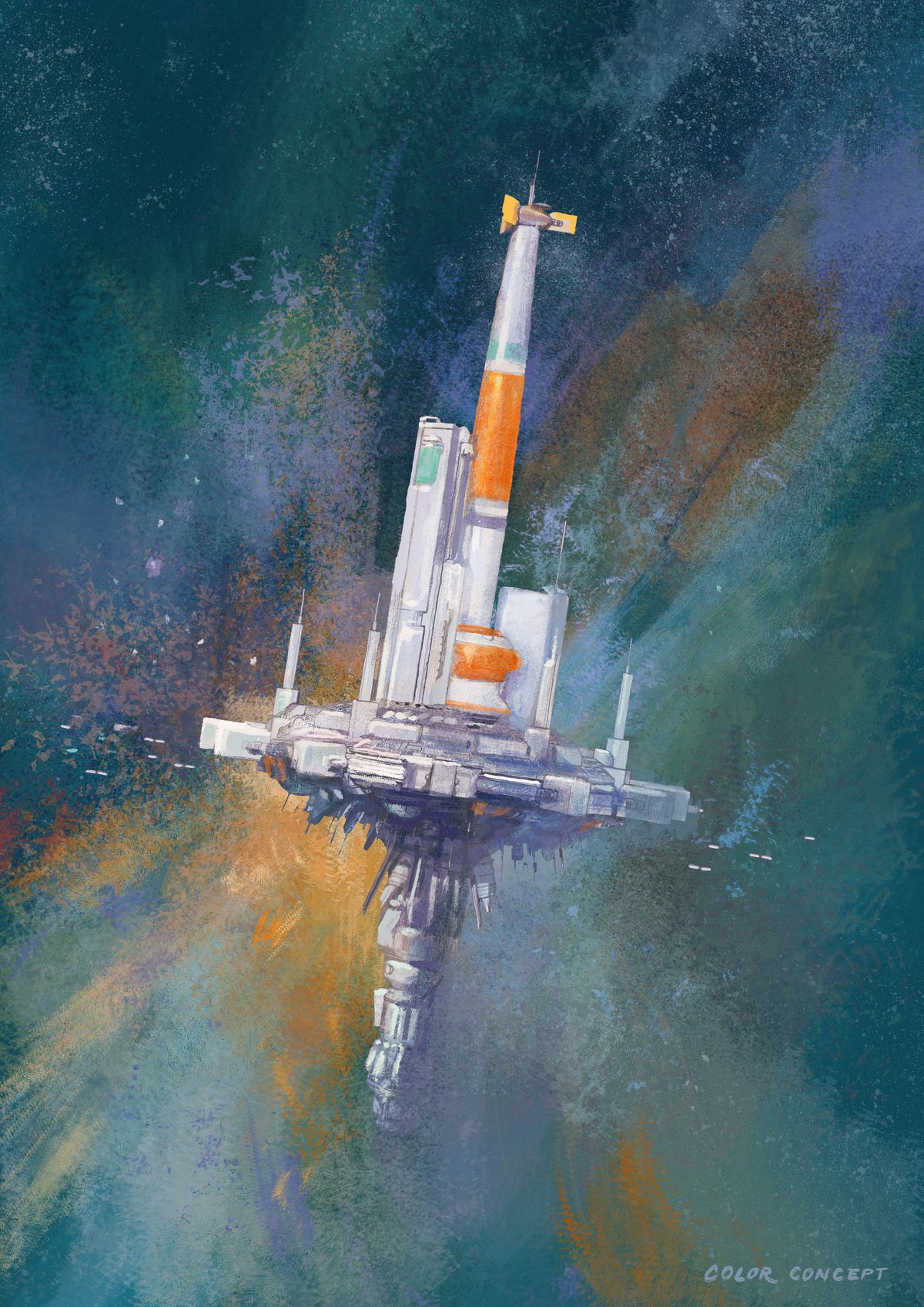
Starlight Beacon concept artImage: Disney Lucasfilm Press
So much has been said about the world-building initiative and the Luminous team’s efforts to prequelize the known Star Wars universe. But how did you figure out where to start? How did you wind up with Light of the Jedi?
The thing to remember about Light of the Jedi, just as a project, is that it had to serve a lot of different roles within the initiative. It’s really the first big introduction to the era, and so the book needed to be needed to give readers a survey of what the world looked like during the High Republic. And Star Wars is not just Jedi, right? There’s a whole governmental system, there are good guys, there are bad guys, there are planets, there are races, there are vehicles, there are creatures, there are all kinds of things. This book didn’t have to introduce all of them, but it needed to give readers a sense of what those things generally speaking felt like. It also needed to bring a lot of brand new characters on the scene that readers had never met before. Yoda obviously is referenced, but this book takes place 200 years before the Phantom Menace, so it’s really an all new cast.
And then the third thing that it needed to do was be really good Star Wars, this sort of indefinable Star Wars field that we all know when we see it or read it or experience it. For me, starting the book with a huge action sequence that takes up a whole third of the book, it’s 100 pages long, during the sequence called the Great Disaster, when something really bad happens to a planet or system and the outer rim enabled me to do all of those things in that one sequence. Because when you have a disaster that’s happening, and a lot of people are being affected by it, and a lot of people are responding to it, you get to see a lot of character building through that event. You also get to see how both the Republic government, through its Chancellor Lena, whatever little military it has, and the Jedi, respond to a disaster that’s potentially going to kill billions of people. It gets a lot of storytelling work done in a relatively short amount of time. The way Avar Kriss responds to being asked to help solve the Great Disaster illuminates her, the Jedi Order, and the Republic. And it’s also exciting and cool at the same time. So that’s just one character. And I did that with about, I don’t know, 15 or 20, during the Great Disaster sequence, but by the end of it, you have a really good sense of, of all of those things I mentioned. And then there’s still two thirds of the book left to go so.
I wanted to develop that sequence of people realizing [the disaster] is happening to show how people start to get hurt, people start to die, things start to blow up. Every chapter has a ticking clock counting down, literally. When it opens there’s three hours to impact and then it goes down, down, down. I wanted it to always feel like you’re reading the same story of the start of this disaster to the end of the disaster, even though you’re seeing it by cutting through many, many different points of view. That was extremely challenging to construct, but I took inspiration from the way most Star Wars movies seem to end, which is intercutting, between massive cool action sequences to develop that kind of final punch, where all these themes of the story are coming together at once and delivering this really, really, you know, breathless sequence. And instead of doing it at the end of the book, I did it at the beginning, although I kind of do it at the end again, too.
You’ve talked about how The High Republic era encompasses The Camelot of Arthurian lore, but also JFK’s Camelot, with its sense of post-war optimism. How did Avar Kriss emerge as one of the important Jedi characters from that world-building? What is her ultimate role?
The first thing I would say is that the idea of Light of the Jedi and The High Republic, the way that the Jedi are depicted in the initiative, is not to reinvent or change or challenge what we know about the Jedi. It is simply to deepen it and and depict them in an era when things were different. The Jedi that we saw in the prequels, which is where we basically saw a robust Jedi Order so far, was under the specter of a pretty corrupt senate and a manipulative Sith overlord who had been doing everything that he could behind the scenes to undermine the Jedi Order for a very long time. We don’t have that influence, and so we have a Jedi Order that is able to sort of that has that is able to and has been able to explore its connection to the Force, in a very deep way for a long time, which is great. And Avar Kriss is emblematic of that. She is a brilliant Jedi who interprets her connection to the Force as music. As readers go through the High Republic material, we did want to look at the way that different Jedi experience the Force because not everybody’s gonna see it the same way.
Because she is so focused on the way that she and the other Jedi contribute to what she calls the song of the Force, she is able to draw together and connect with the other Jedi, which is something that we have sort of seen alluded to in the past, in the Extended Universe with with a concept called battle meditation. She takes it to a different place, a very Jedi type place, which I think is beautiful. And so there are many different Jedi in The High Republic, they all do different kinds of things. They have different points of view, they have different goals. They’re people, basically.
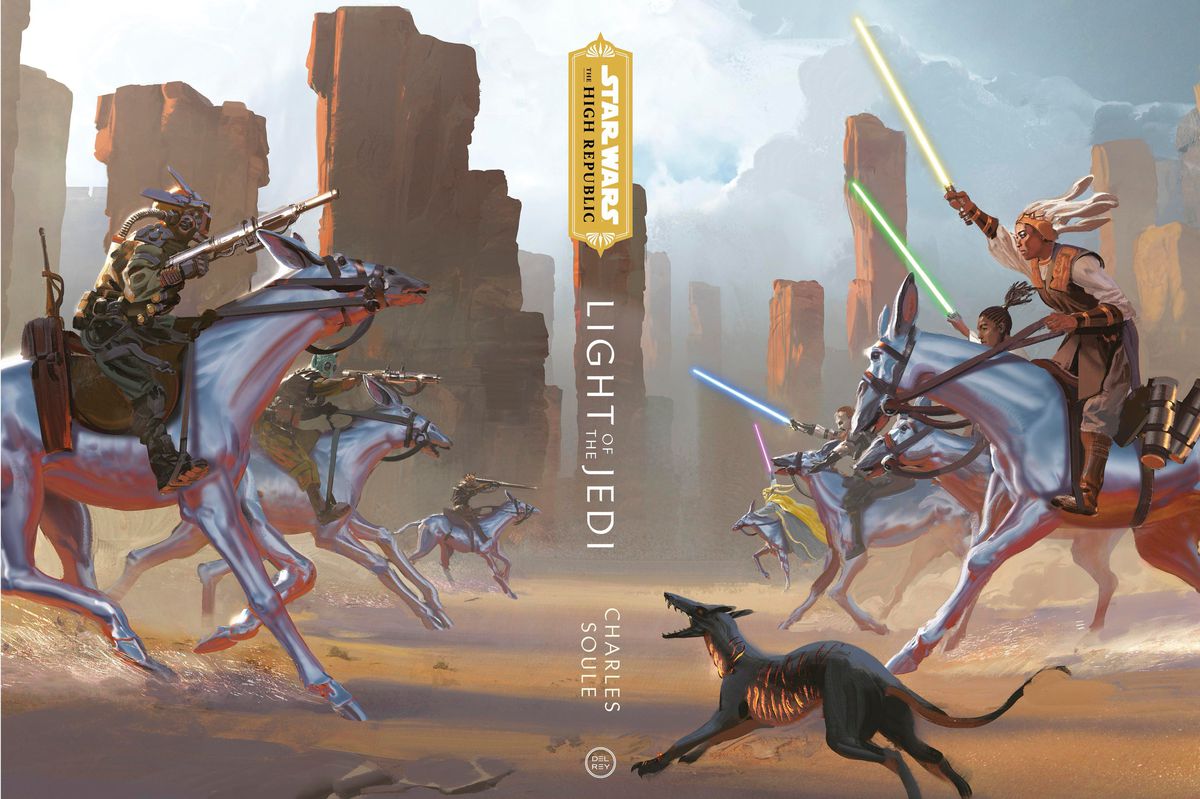
Image: Lucasfilm Ltd./Del Rey
In Light of the Jedi, the Jedi struggle with love and emotions. Did that feel like an under-explored area in Star Wars storytelling?
The thing to know about The High Republic’s Jedi is that the rules that exist in the prequel trilogy still exists. They still take the same vows, they still have the same feelings about it, but their understanding of the strength of the Order and flexibility within the Order and the interpretation of those rules … they’re more diffuse, I would say. The Jedi are all over the galaxy, helping people in all sorts of different places, and the way the Jedi at outposts in the Outer Rim and helping people there might look at the rules of the Order might be a little different than the way that they’re interpreted in the prequels or in Coruscant. Not in any blow-it-all-up-do-whatever-the-hell-you-want kind of way, but certainly the idea of connection … the Jedi understand its importance and understand how it matters to the universe, and matters to the relationships of the vast majority of people. This is going to a place I did not expect this interview to go, but like love, in some ways, it’s also about letting go. It’s about letting people be who they are and supporting them through that journey, which is the opposite of attachment. And so I think it’s very easy for a Jedi to love, it’s just you have to love without being controlling and love without being afraid of losing somebody, which is something Jedi are good at, and Sith are bad at.
Let’s talk about the Nihil now that we finally can. In the many months of lead up they were described as marauders, and I expected villains who were almost pure chaos. But they have a history and a structure that makes them feel a bit like the Jedi. How did their world start coming to life for you and the Luminous team? What is the arc there?
So, yes, the Nihil are marauders, and they’re based in the Outer Rim, and they take what they want and kill who they kill and get in your way you get in their way to prepare. But they have a hierarchy — there’s a bunch of sort of low level grunts and then there’s a group above them and there’s a group of them and then there are the bosses — and that kind of vertical hierarchy informs a lot of the choices because they’re always trying to move up and always trying to push other people down. which is an interesting mechanism. It’s not structured the same way as the Empire or First Order. So the, the Nihil are almost like a beehive or an ant colony. The system is organized, but a lot of it is just individual will and strength that makes you succeed or fail on the Nihil.
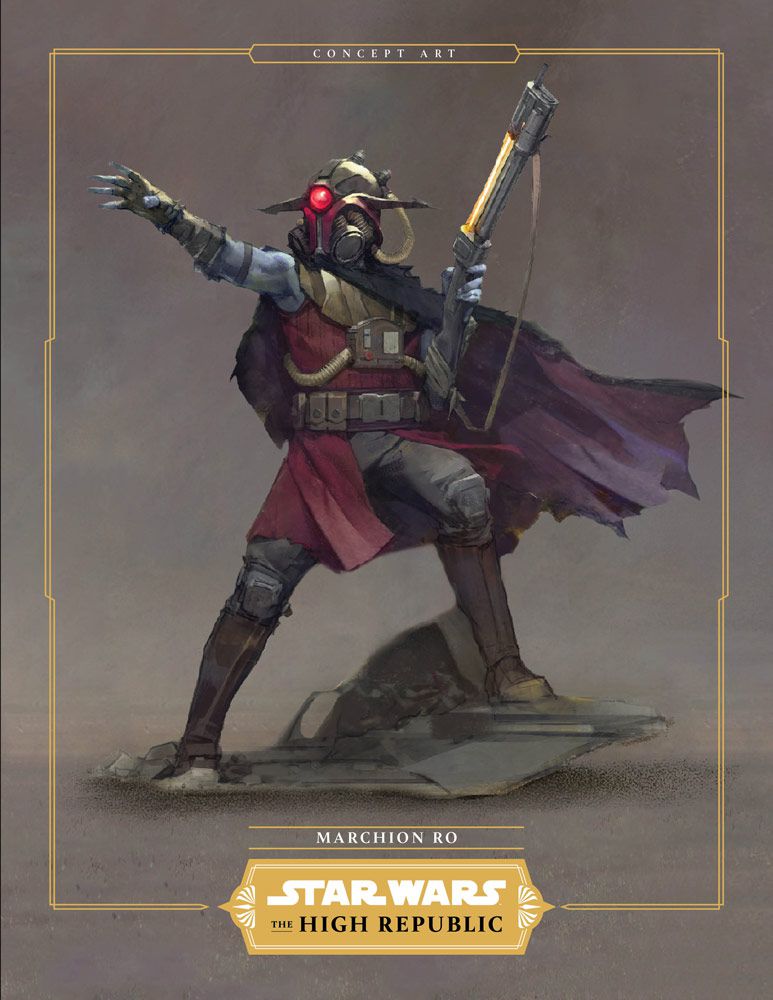
Image: Lucasfilm Ltd.
And to sort of make them more than just a group of evil people who kill other people, you have Marchion Ro, who is in a position called the Eye of the Nihil. The Nihil use a lot of storm imagery, like their organized around storm strikes, clouds, tempests, and Marchion Ro is the Eye. What Marchion Ro provides to the Nihil are things that he calls the paths. The paths are special routes through hyperspace that allow people to basically take shortcuts and do really amazing things and kind of appear out of nowhere and pop up in places where nobody else could ever appear out of hyperspace, which makes them extremely dangerous adversaries because they can jump into someplace, cause a lot of havoc, take what they want, and then they can just vanish again and leave, and you don’t know where they’re coming from, you don’t know how to find, you don’t know how to track them. They’re just really scary. Marchion Ro’s access to those paths is a huge secret that he inherited from his father. Over the course of this book, the Nihil evolve into a very different thing, as does Marchion Ro. And and by the end, they are a threat that is very credible to take on the Jedi and the Republic as a whole. I think that’s one of the coolest magic tricks.
Marchion Ro’s father Asgar Ro came to the Nihil with the paths, when they really were just an Outer Rim marauder group, they weren’t anything special. But Asgar gave them the paths, and the Nihil began to evolve into something that was much more impressive and scary and terrifying. Asgar could not turn the Nihil to what he wanted them to be, and Marchion, after losing his father, decides he’ll just get rich. But then, basically, a fire gets lit under Marchion in this book, and he decides that he is going to complete the work that his father begin — very, very Star Wars there. He starts shaping the Nihil into a weapon that can actually defeat or destroy or cause horrible damage to the Jedi and the Republic. I think it’s very unique for a Star Wars villain — he is not a like meticulous beat-by-beat planner. He takes the opportunities that arise. He’s an improviser. But he’s also completely unafraid to do horribly evil things in service of that goal. And if he does 100 evil things and one of them happens to be the one It moves closer to that goal he’s good with that doesn’t matter, that’s great. Like the goal is the thing, not all the other sort of failed pathways along the way. He has a line in the book where he says that everything and everyone is a tool, and I will use them as I see fit. And that’s kind of how he sees everybody else. That’s a pretty sociopathic point of view, but you don’t want villains to be fluffy.
How did it feel to get to kill a prominent character in a Star Wars story? Almost unheard of in the Expanded Universe!
There’s a lot of death in The Light of the Jedi. From the beginning, with the Great Disaster, we wanted to make sure that the the stakes felt very high, and didn’t feel like we needed to keep a character around for three movies. It’s not like that. It’s really like, you spend 250 pages, getting to know and love a character and like really empathize with them, really believe in their struggle, and then, sorry, off they go. The surprise of storytelling, the surprise of the High Republic era, was a big deal for us from the start. And it has, you know, using that as our big masterplan goal thing, you know, just keep it fresh, keep it surprising to keep people on their toes. We have a lot of storytelling here, we have years of story to come. We’re holding a lot of cards still pretty close.
I get the sense that everyone involved with The High Republic is a little on edge about how fans will perceive the initiative because talking about Star Wars, and advancing the mythology, can be a fraught experience with certain fans. But some of the ways you carve out the known universe in The Light of the Jedi are both major and specific, where it’s clear you’re playing “in bounds.” Talk a little bit about how you approached hyperspace technology in the book, which is a prime example.
This is going to sound negative, but there are rules, a sort of underlying physics and system behind the bizarre, outlandish things that happen. Whether that’s the Force or hyperspace or dilithium crystals in Star Trek or the magic system that was using Game of Thrones — there are rules to it. And we were fortunate that we had access to one of the great minds, great repositories of knowledge, about Star Wars systems, Pablo Hidalgo from story group. He knows all about hyperspace, the way it works, all the conceptions of it. Part of his very cool job is making sure that when hyperspace is depicted across Star Wars, it is depicted in a consistent way. There were diagrams, there were near treatises on the way hyperspace works, and so Light of the Jedi is not a reinvention or a destruction of any of the ways we’ve seen hyperspace used in any of the existing media.
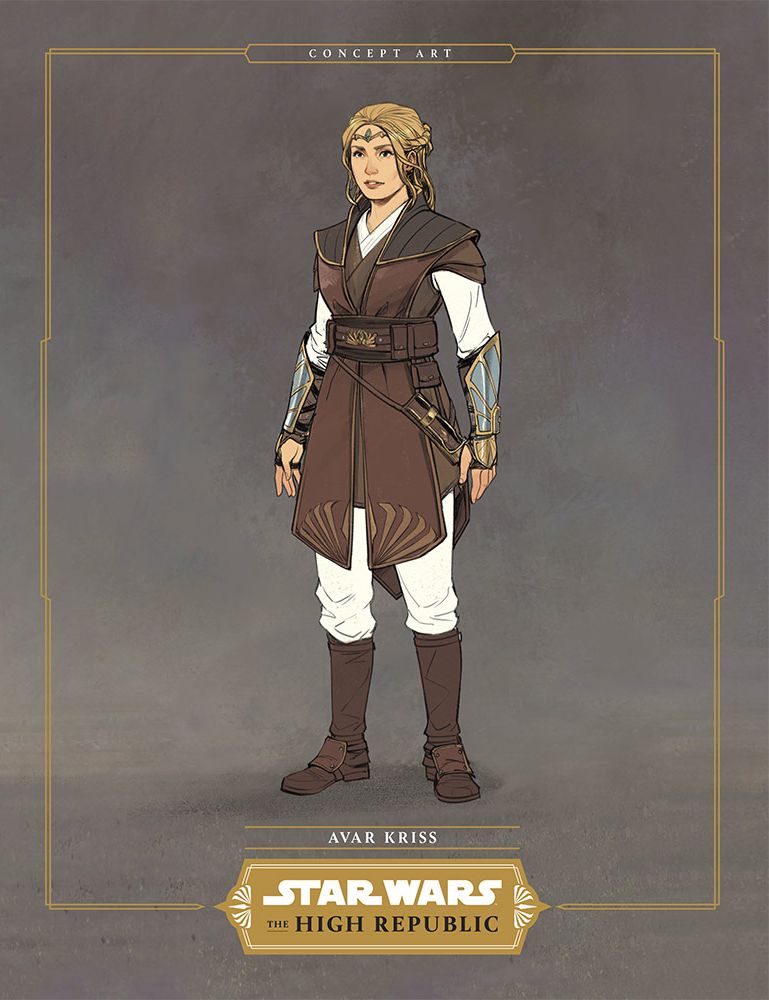
Image: Lucasfilm Ltd.
What we see in Light of the Jedi works with all of it, but it is an earlier time, 200 years before Episode I, and so one of the things we wanted to do was to make the technology of the era feel like it is at least a little bit less advanced. So hyperspace is a place that is like unpredictable. In the Skywalker saga era, the roads through hyperspace are well-mapped. Like, if you enter hyperspace here and you travel on these beacons, you end you will end up at this other place. But in the High Republic era, especially early in the High Republic area, that was not always true in some of the less settled regions. So you might enter hyperspace in system X and not know where you’re going to leave it. You could end up on the far edge of the galaxy, you could end up in the middle of star … it was very, very dangerous. And so plotting those routes and mapping them was the job of a group of people were called hyperspace prospectors.
There’s a family with a familiar last name, a clan, that we see in Light of the Jedi that became very, very wealthy doing that. The San Tekka clan. We see Lor San Tekka in Episode VII, who is an explorer focused on the Force. In Light of the Jedi, we see his forebears who are a wealthy family they got rich from hyperspace prospecting. So it all it all kind of links and flows in a way to that I think is really cool, but the idea that hyperspace is something you have to explore and find paths through is not a reinvention, it’s a revelation.
You’ve also written some short High Republic stories for Star Wars Insider — what’s your goal there?
[The December story] is basically chapter zero of Light of the Jedi. It’s about Joss and Pikka Adren, who are the married couple that we see in the in the book. They are on Starlight before everything goes to hell with a Great Disaster, and it’s kind of how they end up on the Third Horizon. The second story that I’m telling with them with Insider follows up with them just after Light of the Jedi, so you basically get chapter zero, then you get epilogue plus one. For me that was really fun because it’s like DVD bonus material.
And what does the future hold for your own storytelling within The High Republic? What’s next?
What I will say is that we went into there’s a reason this took two, two-and-a-half years to develop and and it was more than just let’s do a bunch of world building in a new era of Star Wars. It was really about what story we could tell that would really hook and grab Star Wars readers for we’re looking for something a little different than what they’ve gotten before we’re looking for the next thing or we’re looking for something that really is authentically Star Wars but is also fresh. And so ultimately, that is not just about an era in the timeline, that is about the characters and more particularly the story that we put them through.
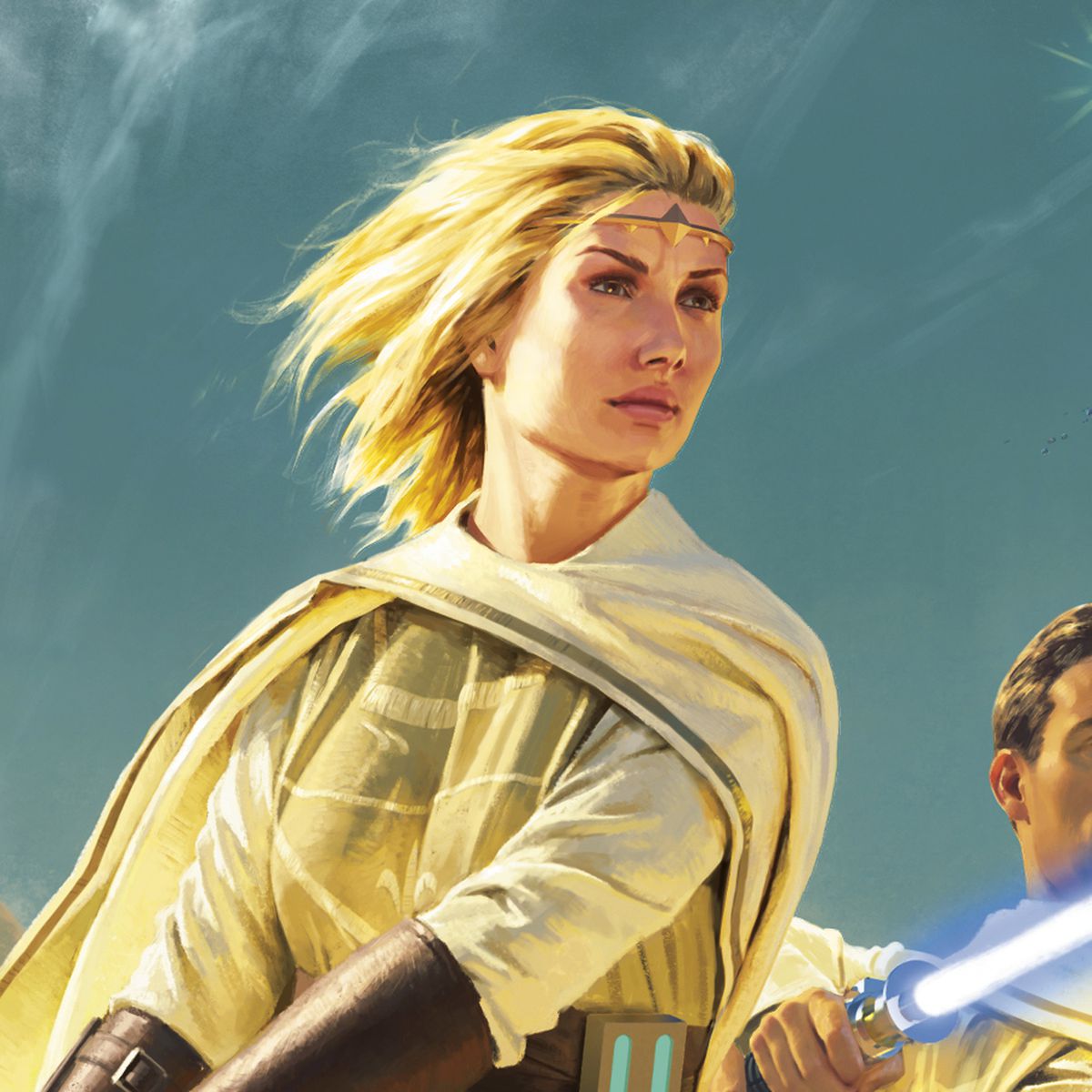
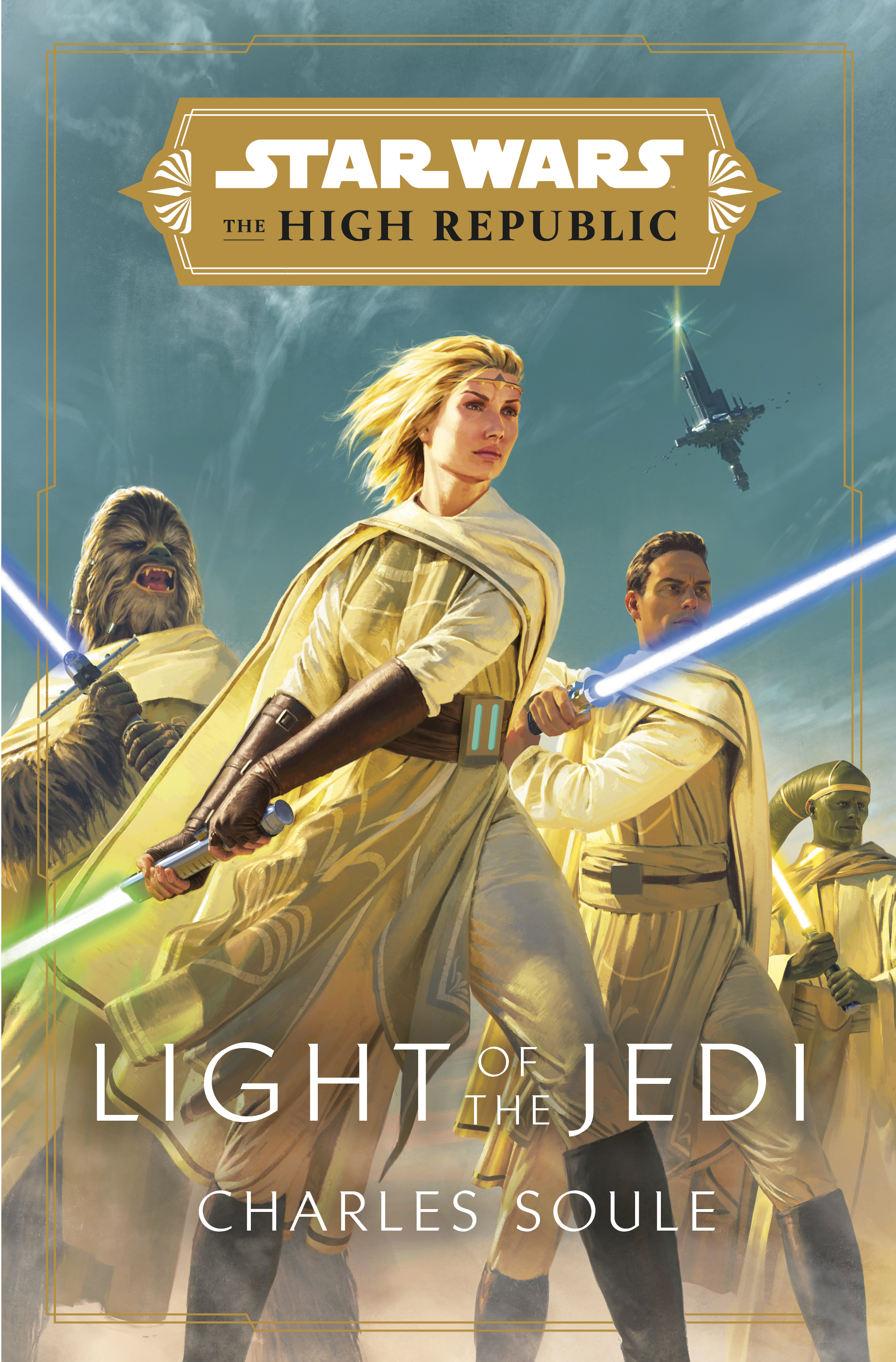
Star Wars: The High Republic: Light of the Jedi
- $19
Prices taken at time of publishing.
Charles Soule kicks off The High Republic era with a new Star Wars prequel set during a Jedi renaissance
-
$19
at Amazon
